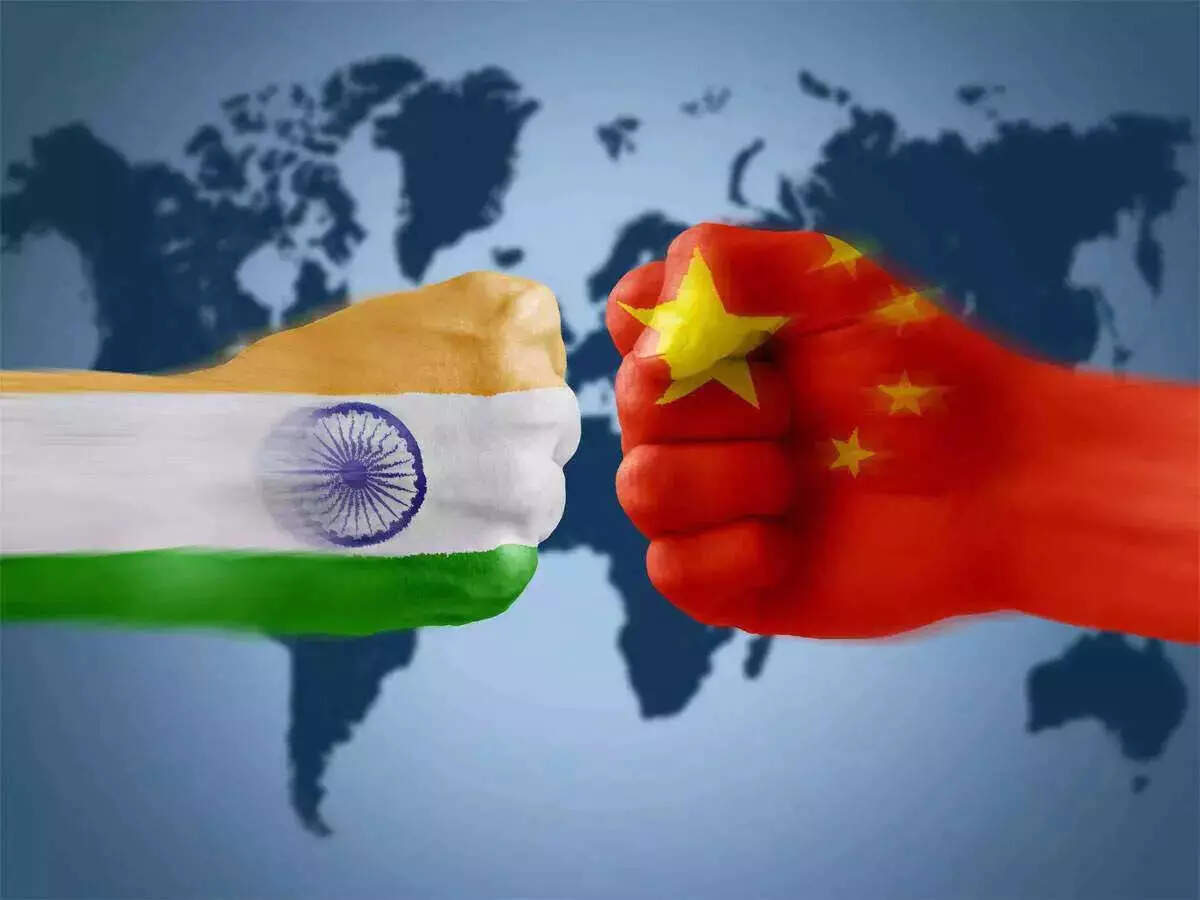
At the University of Texas in the US on September 9, 2024, India’s leader of opposition parties (LOP) appreciated China’s progress mainly on employment generation.
Nothing bad in it, instead we must take lessons from China’s structured progress. Surprisingly, his appreciation was associated with a blame on the present government of India for lagging far behind China. In fact, he placed India’s efforts and progress in a very dim light and bad taste. Therefore, his views attracted public reaction and criticisms.
India also receives a number of leaders of opposition parties from different countries and provides them a platform, if desired, to put their views before the media. None of them ever heard spitting such words of condemnation and defamation against their own countries as our LOP did. He should have used political acumen while interacting with people at overseas platforms.
Unfortunately, he takes pride in his juvenile hawking against his own country on foreign lands. According to an age old proverb, a person bent upon condemning and accusing others requires only a tongue in the mouth. Wisdom, knowledge and foresightedness are not required for giving silly statements.
In fact, our LOP always uses foreign platforms to misguide youth at home. Perhaps, he feels that the present generation of youth in India is either not or little aware of facts of doing and undoing governments in the past.
Therefore, their views can easily be skewed against the present government by making ill-behaved statements. But he is misreading the psychology of Indian youth. Our youth in India is now increasingly becoming investigative and trying to understand the hidden agenda behind the statements cleverly delivered by our politicians.
Our country became independent on August 15, 1947, whereas China got independence on October 1,1949. India adopted democratic pathway of governance, while China adopted the path of Marxism. At the time of independence, both the countries were facing poverty, hunger, malnutrition, poor infrastructure, technological backwardness and regressive or stunted growth of economy. Now our youth wants to understand, “Why is India’s economy lagging far behind China’s economy?
China’s economy leapfrogged to 17.7 trillion US$ (World Bank Report 2023) while India is struggling to touch five trillion US$ mark. Who should be made responsible for this disheartening failure? Our youth wants answers to these questions from those political leaders and parties who enjoyed positions and power after independence.
China’s Strides
Take the case of China first. Mao Zedong’s socialist rule in China from 1949 to 1976 is considered a reflective transformation era. The World Bank had credited the Chinese government with a remarkable achievement of bringing 800 million individuals out of poverty. This period is known for the execution of large-scale infra-projects including improved housing, healthcare, education and road & rail transportation.
Soon after taking over the reins of China after Mao’s death in 1976, Deng Xiaoping focussed on diluting traditional Marxism and accelerated process of economic development. Several reforms were executed on the ground during the next 20 years to make China competitive with the USA in all sectors of the economy. For that he placed strong emphasis on implementation and completion of projects in a time frame.
China’s political, economic, and social life realized all round transformation under his leadership. Since infrastructure, Intellectual property protection laws, labour laws and tax structure were made attractive to foreign investors, the investment started pouring in very fast in China.
China started building world-class research institutions in the mid-1990s. In fact, it took less than 45 years in emerging as a strong competitor of USA and Japan in all those fields impacting economy including manufacturing, bio-technology, nuclear technology, engineering, space research, neno-technology, medical research, innovations/patenting, agriculture, animal husbandry, energy, skilled human resource development, quicker transportation network and logistics facilities.
By this way he laid a very strong foundation for long-term economic progress and sustainability in China. In fact, he successfully transformed the thinking of communist China for industrialists/business houses and allowed bigger business houses to grow. He strongly believed that bigger business houses have capacity to convert country’s products into international brands, besides these business houses also have capacity to generate huge direct and indirect employment for youth. For executing all these reforms in conservative China, Deng Xiaoping is known as the architect of modern China.
Out of several, two exciting examples of Chinese leadership’s vision for economic development can be cited here for the knowledge of our youth. The Chinese leadership understood the growing importance and future needs of semiconductors as early as 1960. China thought of prioritizing semiconductor technology research & development and established semiconductor-related degree programs in five major universities to cater skilled human resources for the emerging semiconductor industry.
This paid an infinite dividend to China. By the end of 1990s, China captured a major share of the global semiconductor market. As per information available on Wikipedia, China represented 53.7% of worldwide chip sales (meaning $239.45 billion out of $446.1 billion) in 2020. Another example reflects that Chinese authorities recognised in the 1980s about the enormous potential of the agro-processing sector to contribute in China’s economic and social development (OECD 2000 doc).
Accordingly China successfully executed its plan to develop world class agro-processing industry to harvest the global processed food market opportunities estimated to grow from US$ 163.79 billion in 2024 to US$ 400.43 billion by 2030 (https://www.marketresearchfuture.com/reports/food-processing-market-8588). Several such examples of advanced planning and timely execution can be cited, that helped China in taking early lead to strengthen various sectors linked to its economic development and employment generation.
Determination deficit in India
Pandit Jawahar Lal Nehru became the Prime Minister of India after the independence in 1947. He must be appreciated for establishing several key institutions for human resource development , healthcare, and also to carry forward the science & technology in different sectors. Besides, he also established several public sector undertakings (PSUs) mainly for achieving the specific goals related to economic development and generation of employment.
He also systematically pursued his vision of industrialization in the country. All this was done during his over 16 years’ tenure as PM (1947-1964). His daughter Smt Indira Gandhi ruled India as PM for over 15 years (1966-77,1980-84) and his grandson Rajeev Gandhi was PM for over five years (1984-89). Dr Man Mohan Singh’s 10 years (2004-14) tenure as PM is also considered as indirect rule of Gandhi family.
Keeping aside Shri Lal Bahadur Shastry’s 1964-66 and Sri Narshimha Rao’s 1991-96 tenures as PM, the Nehru-Gandhi family ruled India for about 48 years out of nearly 55 years of Congress rule in the country. The LOP, also comes from Nehru-Gandhi lineage, is therefore liable to respond to the public queries that arose after his irresponsible statements in US. Queries are several but some need special attention.
What went wrong that an early good and upright start given by Nehru could not help in transforming India’s economy? A large number of PSUs, established by Nehru ji and other PMs, started becoming non-performing assets (NPA) even during the Congress regime. Why did it happen? During this period, international investors and companies avoided investment in India because of poor infrastructure, vacillating policies and uneasy business environment. In North India, law and order was also a serious issue.
Even the home grown industrialists / business houses were being continuously haunted during the 1960s-70s. That radically slowed down industrial growth. To pour salt on the wounds of the Indian economy, a political party (now an ally of Congress party) frequently launched countrywide anti-industry strikes during the 1970s-80s. That demoralized industrialists and entrepreneurs. Industrialists incurred heavy losses that led to closure of several big industries.
A number of medium scale industries also started facing losses because of high transport and other logistic costs. Therefore, drastic reduction in employment opportunities began looming in the country. Unfortunately, the LOP still talks against business houses. Perhaps, he did not try to learn from China about the role of industries in economic development and employment generation.
China’s ability to quickly and efficiently move to take its domestically produced products to the global market has been a critical component in its growth miracle (Wharton Magazine, December 2015). Besides, China always followed a broader strategy to continuously enhance the quality of its labour force (up-skilling) to achieve government’s economic goals in agriculture and advanced manufacturing. This paid a lot to the Chinese economy. But India moved sluggishly in implementing plans and projects in most of the areas responsible for economic growth.
This approach could not create jobs and also could not help in competing with China’s economy. Slowly and slowly India started believing in importing goods rather than putting timely efforts into strengthening and triggering its own system to capture the global opportunities.
A barefaced example can be cited here. After realizing the Green Revolution (GR) in the 1970s, the Indian government of that time miserably failed to encash GR for revenue and employment generation through value addition, processing and branding for global markets. During the 1970s and 1980s, India took forward mechanization in agriculture with the import of machines and tools while China updated its own native industries and up-skilled available talent to make advanced machines and tools. Soon, China started earning revenue from exports of machines and tools and generated a huge number of jobs as well.
Ensuring food security does not mean only enhancing the efficiency and productivity of farms but also to properly save, distribute and maintain a strong processing capacity (Majiwa et al., 2018 – https://doi.org/10 . India did not create a sufficient number of grain silos (modern storage facilities) and other storage capacities. Hence huge amounts of food grains and horticultural & animal products were wasted for decades.
Slow and age-old modes of transportation further add to wastage of agricultural produce. Development of the food logistic chain and faster modern transport facilities should have been taken as the priority projects immediately after realization of GR. In fact, it was & it is necessary to develop low cost modern storage facilities not only for food grains storage but also for the storage of horticultural and dairy products to save farmers from distress sale and also for maintaining the quality of products.
Had it been done during the 1970s-80s, it could have helped in consolidating the economy and creating respectable jobs for rural youth. Several such examples of sluggish initiatives of governments during 1947-2014 can be cited which mired the economic growth and jobs generation in India.
After the change of government in 2014, a lot of emphasis has been given on world-class infrastructure development including development of faster transportation by road, rail, air and waterways. Now world-class logistics facilities are emerging in India. Skill development and up-skilling of our youth are also getting priority.
National Education Policy 2020 (NEP) has been implemented which focuses on generating future ready skilled youth power. A large number of new institutions of higher learning including IITs, IIITs, IIMs, AIIMS and skill universities/centers have been set up since 2014, India is making significant strides in the energy sector aiming at transforming its energy production landscape. Initiatives for the “आत्मनिर्भर भारत” (Self-reliant India) mission has started paying dividend. An example can proudly be shared that India is now an exporter of over 500 important defence items including missiles, equipment/arms.
Some of the countries have shown their interests in purchasing our fighter aircraft “Tejas” also. Several MNCs are now preferring India to invest. Potential investors have come for the development of highly expensive semiconductor production facilities in India. It is expected that India will start mass-production of semiconductors from 2025.
India is now stepping forward with confidence. Let everyone of us be a proud contributor in achieving national goals in the next ten years.
(The author is Professor (Retd), Haryana Agriculture University, Hisar, Ex Consultant Haryana Farmers’ Commission; Views are personal)



